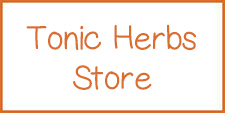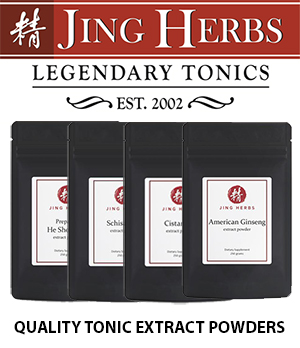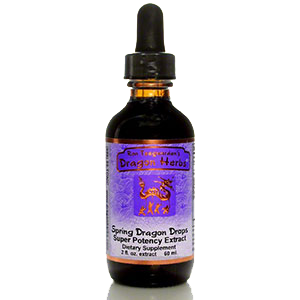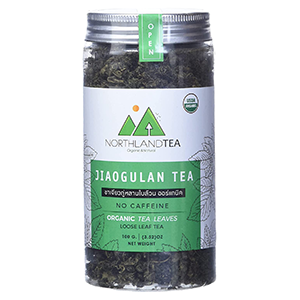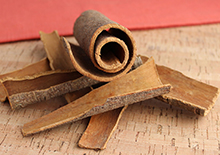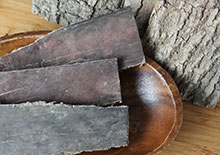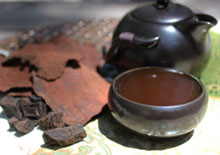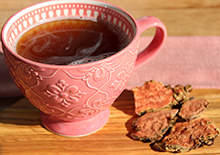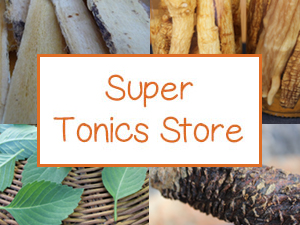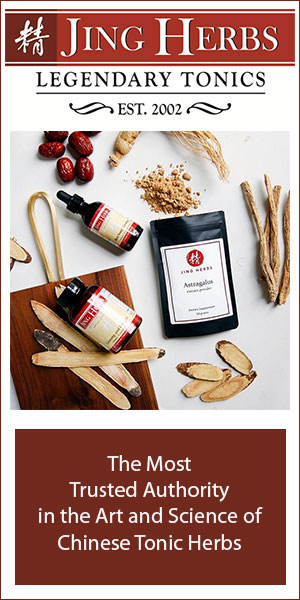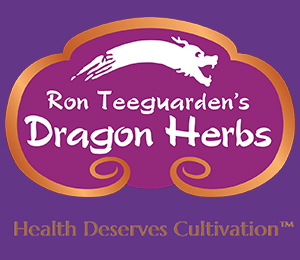- Home
- Chinese Herbs
- Gynostemma Tea Benefits
Gynostemma Tea Benefits, An Energizing Herbal Adaptogen
Intro | What is Gynostemma? | Grow Your Own | Health Benefits | Types | How to Use | Precautions | Shop

Gynostemma, also called jiaogulan, is a green leafy herb that became famous as a legendary infused "immortality tea" among certain isolated highland village populations of southern China. This is a location where the plant naturally grows wild and where people were reported to live healthy long lives from daily consumption.
Because of its remote use, it has only just recently been introduced into the Chinese herbal system and is now a popular hot tea to drink throughout Asia for its energizing and anti-fatigue effects, often used as a replacement for coffee and caffeinated teas.
Table of Contents
Intro | What is Gynostemma? | Grow Your Own | Health Benefits | Types | How to Use | Precautions | Shop
There has been quite an influx of scientific research conducted in the last 50 years on gynostemma tea due to a number of unique phytochemicals concentrated in the leaves that are shown to have antioxidant, anti-inflammatory and antitumor activities.
While undergoing analysis in the 1970's as a potential natural sugar substitute, because of its naturally sweet taste, its high saponin content was found to be comparable to the primary active ingredients in ginseng roots. Containing jiogulan-specific gypenoside compounds similar to the ginsenosides in ginseng, but in far greater numbers, it is often called "southern ginseng" because of this distinct feature.
Like other Chinese herbs, jiaogulan is considered an adaptogen because of its ability to modulate immune functions and provide protective effects against a number of stress factors known to compromise long-term health. Regular use of adaptogenic herbs, like gynostemma, are nontoxic to the body and help to improve one's ability to build resistance to trauma, anxiety and fatigue when consumed on a regular basis.
These qualities as an adaptogenic substance are directly related to its high amount of triterpenoid saponin gypenosides as well as a number of polysaccharide compounds, potentially helpful for lowering high blood pressure, boosting lipid metabolism as well as balancing cholesterol and blood sugar levels.
While the plant is most commonly consumed as a tea because of its delicious flavor, it is also available as an encapsulated hot water extract or alcohol tincture. It is relatively safe to consume for a wide range of people and is especially appropriate for stress management from mental exertion or over-work.
In Traditional Chinese Medicine, gynostemma leaf has properties that are bitter and cool, and are beneficial to the lung and heart organ systems. It is believed to offer effects that clear heat, reduce inflammation, moisten the lungs and build adaptive energy.
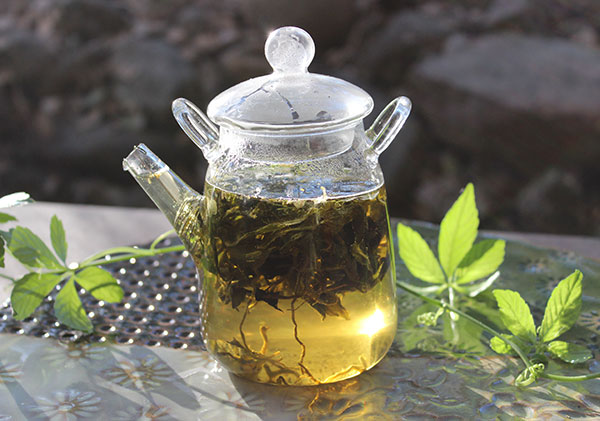
What is Gynostemma?
Gynostemma pentaphyllum, or jiaogulan (pronounced "gee-ow-goo-lan"), is a five-leafed perennial climbing vine that comes from the family Cucurbitaceae, the same plant family as cucumbers, gourds and melons. Unlike these varieties, gynostemma does not bear edible fruit and is a dioecious species, existing as either a male or female plant. When the two are grown together the female will produce small clusters of black seeded berries.
The genus gynostemma is composed of close to 20 different species, with Gynostemma pentaphyllum being the most recognized for its medicinal saponin-rich qualities. According to the book "China's Immortality Herb", "Jiaogulan can be found growing in the mountains and plains, at an elevation range of between 1,000 and 10,000 feet (300-3200 meters)."
Although not a traditional herb included in the usual Chinese herbal pharmacopoeia, in the last several decades it has increasingly gained status and is now commonly listed among the classified major tonic herbs.
Also referred to as "sweet-tea vine", the plant is native to subtropical mountainous regions of southern China and northern Vietnam. It became particularly famous as an "immortality tea" regularly consumed among inhabitants located near the Fanjing Mountain region of the Guizhou province who were alleged to have a longer lifespan.
This was reportedly evidenced in 1970 after the results of a Chinese nationwide population census was conducted. Data from this survey identified a high percentage of people living healthy lives to 100 years of age. This was not only documented in regions of the Guizhou province, where gynostemma prolifically grows, but also in other gynostemma habitat locations in the Guangxi and Sichuan provinces.
Most of the research was investigated by a team of scientists from the Chinese Academy of Medical Sciences, who eventually attributed these abnormally long-living centenarian population groups to this one herb they all consumed daily.
Today it is used throughout Asia and also known in China as xiancao, in Japan as amachazuru, in Korea as dungkulcha, in Vietnam as giao co lam and in Thailand as baan ja kahn. These are all tropical to subtropical regions where the vine naturally grows wild.
Gynostemma is cultivated on a large scale for commercial use in Northern Thailand as well as China, with several organically certified types available from these regions.
Grow Your Own Gynostemma Plant
Gynostemma can be grown in other parts of the world, especially in temperate climate zones (USDA zone 8 and 9) and will remain hardy between 20°F (-6°C)-85°F (29°C). It is adaptive to large fluctuations in day and night time temperatures.
Preferring indirect sunlight and shady areas, gynostemma can be trellised as a climbing vine in an outdoor garden space in well-drained soil, but also makes a very nice hanging potted houseplant because of its low light requirements.
The fresh mature leaves can be readily harvested for teas or can be dried for later use. The rhizomes can be divided for replanting or transplanting purposes.

Gynostemma Tea Benefits
1) Contains Triterpenoid Saponin Gypenosides
2) Immunomodulating and Adaptogenic Activities
3) Antioxidant and Anti-Inflammatory Agent
4) Anti-Fatigue and Neuroprotective Effects
5) Lipid Metabolism, Weight Loss and Diabetes
Contains the Triterpenoid Saponins Called Gypenosides
Gypenosides are one of the main chemical constituents found in gynostemma that are responsible for its health promoting effects. These are triterpenoid saponins that are also present in other tonic herb species, for example the withanolides in ashwagandha, the eleutherosides in siberian ginseng, the bacoside A in brahmi and the astragalosides in astragalus root.
Jiaogulan gypenosides are most notably compared to the ginsenoside saponins found in Panax ginseng root. In fact, according to Japanese investigation conducted in the early 1970's, the herb has a nearly identical chemical structure to the four ginseng ginsenosides Rb1, Rb3, Rd and F2.
Gynostemma is sometimes referred to loosely as "southern ginseng", since it grows prolifically in south central China and because of its similarity to ginseng and its saponin content. Today it is approximated that there are well over 80 gypenosides in gynostemma, in contrast to ginseng which is believed to contain about a total of 28 ginsenosides.
The triterpenoid saponins in gynostemma are not however concentrated in the root, but are found most predominantly in the leaves of the Gynostemma pentaphyllum species.
In one study it was shown that, "The accumulation of ginsenosides in the leaf occupied first place, the stem came second, and the root was the lowest." The same was also shown true for gypenosides and it was further revealed that the overall content was found to be higher in male plants as opposed to female varieties.
Immunomodulating and Adaptogenic Activities
The triterpenoid saponin content as well as a number of polysaccharides specific to the Gynostemma pentaphyllum species are the primary active ingredients responsible for the plants immune modulating effects as an adaptogen.
As a double-directional herbal substance, it can protect against various stress factors and help to modulate immune functions by either boosting under-activity or suppressing over-activity, depending on which is specifically required by the individual. These effects are considerably enhanced when the herb is consumed on a regular basis over a long period of time.
In earlier research, the immunomodulatory influence of the saponins in gynostemma was compared to the actions of ginseng and astragalus.
Antioxidant and Anti-Inflammatory Agent
The gypenosides and polysaccharides in gynostemma leaf infusions or extracts exhibit potent antioxidant effects that can help prevent oxidative stress and free radical damage as well as protect against chronic inflammation.
In a 2015 published report it was demonstrated that the gynostemma-specific polysaccharide GPP1 offered neuroprotective effects and inhibited oxidative stress, protecting cells against the reduction of glutathione and superoxide dismutase, two important enzymatic antioxidants.
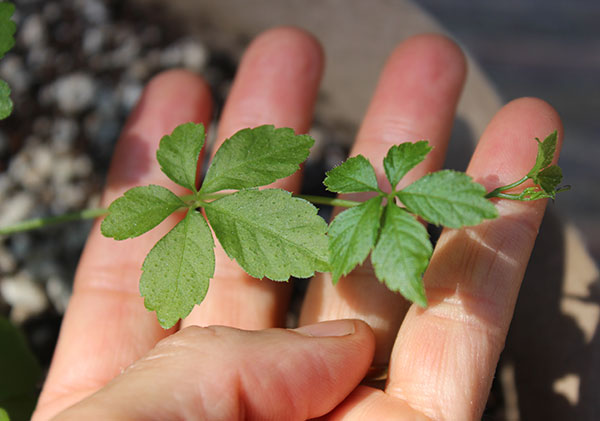
Anti-Fatigue and Neuroprotective Effects
While gynostemma tea can be stimulating to the body, it is a non-caffeinated plant species. It provides an energizing influence like other adaptogenic herbal stimulants and, being a leafy green variety is very comparable to that of holy basil, also considered a rasayana in Ayurvedic herbalism.
Gynostemma tea makes an invigorating hot morning beverage that can activate biological processes or it can likewise be consumed to calm the nervous system without causing sedation like nervine tonics. Adaptogens and their double directional properties can go
either way depending what is most appropriate for any one individual
constitution or health condition.
Teas and extracts can help to support mental concentration and are particularly beneficial to anyone fatigued from working long hours at the computer or overly stressed from activities of day to day life.
In one study conducted on mice it was shown that Gynostemma pentaphyllum
polysaccharides, "mainly composed of mannose, glucose, arabinose,
rhamnose, galactose and glucuronic acid", had an anti-fatigue effect on a
physical level. (*)
According to a 2016 published research in the journal Psychopharmacology, gypenosides and their neuroprotective effects are believed to increase monoamine neurotransmitter levels in the brain, demonstrating "antidepressant-like effects in mice."
In other researched documentation, Gynostemma pentaphyllum polysaccharides were suggested as a "promising candidate for the treatment of Parkinson's disease (PD)" and in another study were shown to help lessen the development of dyskinesia, the impairment of voluntary movements.
Benefits Lipid Metabolism, Weight Loss and Diabetes
Gynostemma is often now a commonly utilized herb in China for treatment of elevated cholesterol, hyperlipidemia, fatty liver as well as obesity and type 2 diabetes.
Some of these effects are in part due to its high saponin glycoside content which gives the herb its sweet taste. The term "saponin" is actually derived from the Latin word meaning soap as they are chemical compounds with soap-like characteristics.
The leaves foaming actions become evident when prepared tea infusions are reheated. A foam will develop at higher temperatures that will cause the tea liquid to froth-up and rapidly rise to the top of the pot or kettle.
Effects on Lipid Metabolism
In one study analyzing gynostemma and the anti-hyperlipidemia drug called atorvastatin, it was shown that "GP [Gynostemma pentaphyllum] acts by affecting lipid metabolism. After hyperlipidemia model rats were treated with GP, cholesterol and low density lipoprotein levels in the plasma decreased."
Gynostemma teas or extracts are also known to help normalize blood pressure, reduce inflammation and improve cardiac function as well as decrease risk of various cardiovascular diseases, like atherosclerosis. (*)
Gynostemma for Weight Loss and Diabetes
Likewise, jiaogulan's effects at increasing fat metabolism can also be directly applied to those wanting to reduce excess body fat and is thus a widely used Asian treatment for weight reduction. A dietary Gynostemma pentaphyllum-derived extract, called actiponin, was shown in a double-blind study to be "effective for treating obese individuals" when tested on Korean subjects.
When combined with regular exercise and a health promoting diet, gynostemma tea or its hot water concentrates can not only help to promote weight loss, but also can encourage healthy blood sugar levels for those with type 2 diabetes by assisting in the secretion of insulin. (*)
In one published study in the Journal of Nutrition and Metabolism, it was concluded that gyntostemma tea "exerted an antidiabetic effect by improving insulin sensitivity."

Types of Gynostemma
- Dried Bulk Herb - This is dried gynostemma leaves and usually includes some stems and curling tendrils, but not always.
- Fresh Plant - Leaves harvested from a homegrown gynostemma plant or from local wild habitats.
- Tea Products - The dried leaves are commonly found in many tea formulations that include other herbal stimulants or adaptogens.
- Supplements - High quality supplements are created from hot water leaf extracts as opposed to the straight ground leaf powder. Powdered hot water extracts are usually encapsulated, rather than used as a bulk loose powder. Supplements are also sometimes available as a tinctured solution.

Gynostemma Product Quality
Quality dried bulk gynostemma leaves or products come from high altitude farms that are preferably organically grown and/or secluded from crops that use pesticides, herbicides or chemical treatments.
Unfortunately, many Chinese herbs, including organic varieties, have been shown to contain some amount of pesticide residues obtained from nearby fumigated agriculture, which does regrettably comply within some organic regulation standards. It is therefore important, when consuming teas or extracts on a regular basis, to make sure they are derived from a clean environment as well as independently tested for toxic contaminants.

How to Use
Although fresh gynostemma leaves are edible, it is usually dried and heat processed to release many of its beneficial compounds. As a leafy green plant material, it requires only a short hot water infusion process.
This involves placing the bulk leaves or tea bag in a jar, teapot or cup and adding hot water. It is commonly steeped for about 15 minutes, then strained and will turn the liquid a mild green-brown color.
One teaspoon of leaves per cup of hot water is the average dosage generally recommended.
This is the traditional way to consume gynostemma, as a hot herbal tea made from the dried leaves. It has a delicious slightly sweet taste with a flavor similar to green tea and nettle. Because of its strong rejuvenating effects, it is frequently used as an alternative in place of caffeinated tea or coffee.
Hot water extracts are also available for convenience in capsule form. You can also, of course, add dried leaves to other herbal tea blends or use the bulk powdered extract (from opened capsules) in drinks or recipes.
(Try our kombucha mojito recipe made with a gynostemma nettle tea infusion)
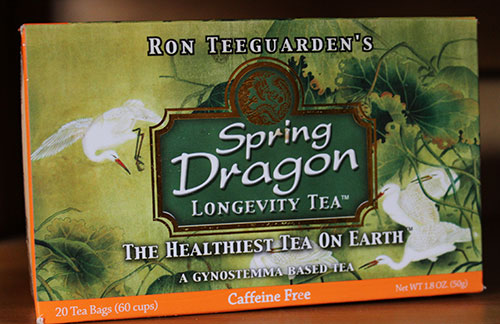
Spring Dragon Longevity Tea
One of our favorite gynostemma tea products to consume is one by Dragon Herbs called Spring Dragon Longevity Tea. This tasty tea blend utilizes gynostemma the base tea ingredient, but also includes five other infused herbal extracts of goji berries, astragalus, schizandra, siberian ginseng, luo han guo. One tea bag makes 3 cups of tea, so one box of tea usually lasts well over a month.
It is also available as a liquid extract which can be more convenient for dropping into water and drinks, if you're not necessarily a tea drinker.
Precautions:
We recommend consulting your physician or healthcare provider before using this gynostemma if you are pregnant, breastfeeding, have a serious medical condition or taking prescription drugs, especially blood thinners or heart medications.
Shop Related Products (About Affiliates & Amazon Associate Paid Links)
Affiliate Disclaimer: This section contains affiliate product links. If you make a purchase through our recommended links, we receive a small commission at no additional cost to you. Thanks for the support.
